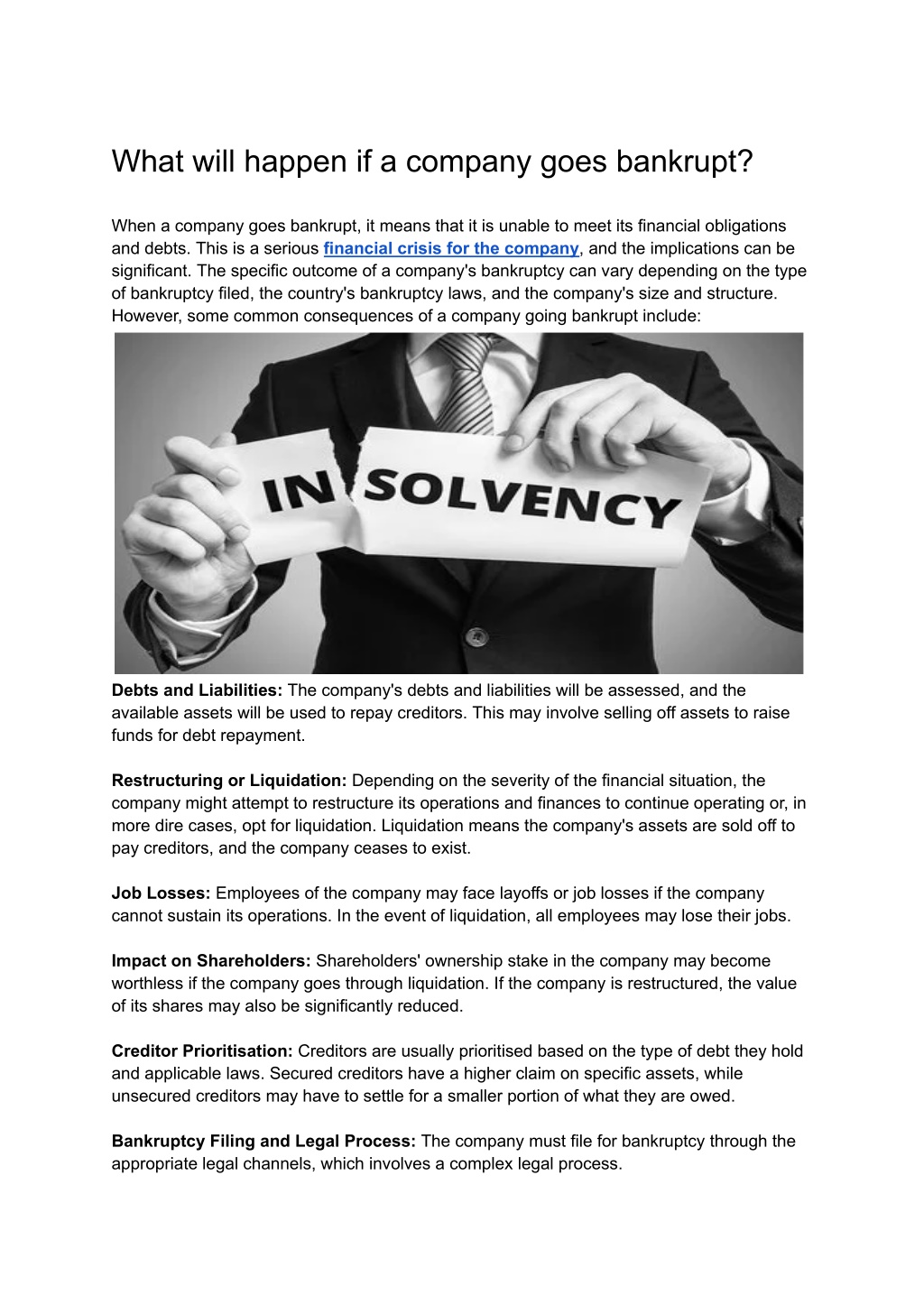Explained: Company Administration UK and What It Implies for Services
Explained: Company Administration UK and What It Implies for Services
Blog Article
The Process and Repercussions of a Business Entering Administration
As a company encounters economic distress, the choice to go into management marks an important point that can have significant implications for all entailed parties. The process of going into administration is elaborate, involving a series of actions that intend to navigate the company in the direction of possible healing or, sometimes, liquidation. Understanding the duties and duties of an administrator, the effect on numerous stakeholders, and the legal obligations that come right into play is crucial in understanding the gravity of this circumstance. The consequences of such an action ripple past the business itself, shaping its future trajectory and influencing the more comprehensive service landscape.
Review of Company Administration Refine
In the world of company restructuring, a crucial preliminary action is obtaining a thorough understanding of the complex business management procedure. Company administration describes the official insolvency procedure that intends to save an economically distressed firm or attain a much better result for the company's financial institutions than would be feasible in a liquidation scenario. This procedure includes the visit of a manager, who takes control of the business from its supervisors to assess the financial situation and determine the very best course of activity.
Throughout administration, the firm is provided security from lawsuit by its creditors, supplying a halt duration to formulate a restructuring strategy. The manager deals with the business's monitoring, lenders, and other stakeholders to design an approach that might entail selling the organization as a going issue, reaching a business volunteer arrangement (CVA) with financial institutions, or ultimately putting the firm right into liquidation if rescue efforts confirm futile. The key goal of firm administration is to take full advantage of the go back to lenders while either returning the company to solvency or closing it down in an organized way.

Duties and Obligations of Administrator
Playing a critical role in supervising the company's monetary events and decision-making procedures, the administrator thinks significant obligations throughout the corporate restructuring process. The key task of the manager is to act in the finest passions of the company's financial institutions, aiming to accomplish the most beneficial result feasible - what happens to employees when a company goes into liquidation. This entails carrying out a comprehensive assessment of the company's economic situation, developing a restructuring plan, and implementing strategies to make best use of returns to lenders
Additionally, the administrator is responsible for liaising with various stakeholders, including staff members, vendors, and regulatory bodies, to guarantee openness and conformity throughout the management process. They have to additionally connect efficiently with shareholders, giving regular updates on the company's progress and seeking their input when necessary.
Furthermore, the manager plays a crucial role in taking care of the day-to-day procedures of business, making vital choices to preserve connection and maintain value. This consists of examining the practicality of different restructuring alternatives, bargaining with creditors, and ultimately directing the business towards a successful departure from administration.
Effect On Company Stakeholders
Thinking a crucial placement in looking after the business's decision-making procedures and monetary events, the administrator's actions during the company restructuring procedure have a straight influence on numerous business stakeholders. Consumers may experience disruptions in services or product schedule during you can find out more the administration procedure, influencing their count on and loyalty in the direction of the business. Furthermore, the community where the business operates can be impacted by prospective job losses or adjustments in the company's procedures, affecting neighborhood economies.
Legal Ramifications and Responsibilities
During the process of firm administration, mindful consideration of the legal implications and commitments is critical to ensure compliance and safeguard the passions of all stakeholders included. When a company goes into administration, it causes a set of legal requirements that must be complied with. One of the key responsibilities is for the appointed manager to act in the ideal interests of the company's lenders. This task needs the manager to conduct extensive investigations into the firm's affairs, examine its monetary placement, and establish a strategy to optimize returns to creditors.
Additionally, legal ramifications arise concerning the therapy of staff members. The administrator needs to comply with work regulations relating to redundancies, employee civil liberties, and obligations to provide required information to staff member representatives. Failing to follow these lawful requirements can cause legal activity against the business or its administrators.
Furthermore, the firm getting in administration might have legal commitments with various celebrations, consisting of property managers, customers, and vendors. These agreements require to be examined to figure out the very best strategy, whether to terminate, renegotiate, or accomplish them. Failure to deal with these contractual responsibilities properly can result in disputes and possible lawful consequences. Fundamentally, understanding and meeting lawful responsibilities are crucial elements of browsing a business through the management process.
Strategies for Business Healing or Liquidation
In considering the future direction of a business in administration, calculated planning for either recovery or liquidation is necessary to chart a practical path ahead. When going for company recovery, essential strategies might include carrying out a comprehensive analysis of business procedures to determine ineffectiveness, renegotiating contracts or leases to enhance cash money flow, and executing cost-cutting measures to enhance productivity. In addition, seeking brand-new financial investment or funding alternatives, branching out income streams, and concentrating on core proficiencies can all add to a successful recovery strategy.

Conclusion
Finally, the procedure of a firm getting in management entails the consultation of an administrator, that handles the responsibilities of managing the firm's events. This procedure can have considerable consequences for numerous stakeholders, including lenders, employees, and shareholders. It is very important for companies to thoroughly consider their alternatives and techniques for either recouping from financial difficulties or waging liquidation in order to minimize potential legal effects and commitments.
Company management refers to the official insolvency procedure that aims to rescue a financially distressed firm or achieve a much better special info outcome for the firm's creditors than would be feasible in a liquidation circumstance. The administrator works with the business's management, lenders, and other stakeholders to devise an approach that may entail offering the company as a going issue, reaching a firm voluntary plan (CVA) with lenders, or eventually placing the business right into liquidation if rescue attempts show useless. The key objective of business administration is to optimize the return to creditors while either returning the business to solvency or shutting it down in an orderly way.
Assuming a crucial position in overseeing the company's economic affairs and decision-making processes, the manager's actions during the business restructuring procedure have a straight effect on numerous business stakeholders.In final thought, the process of a company going into administration involves the visit of an administrator, who takes on the obligations of managing the business's events.
Report this page